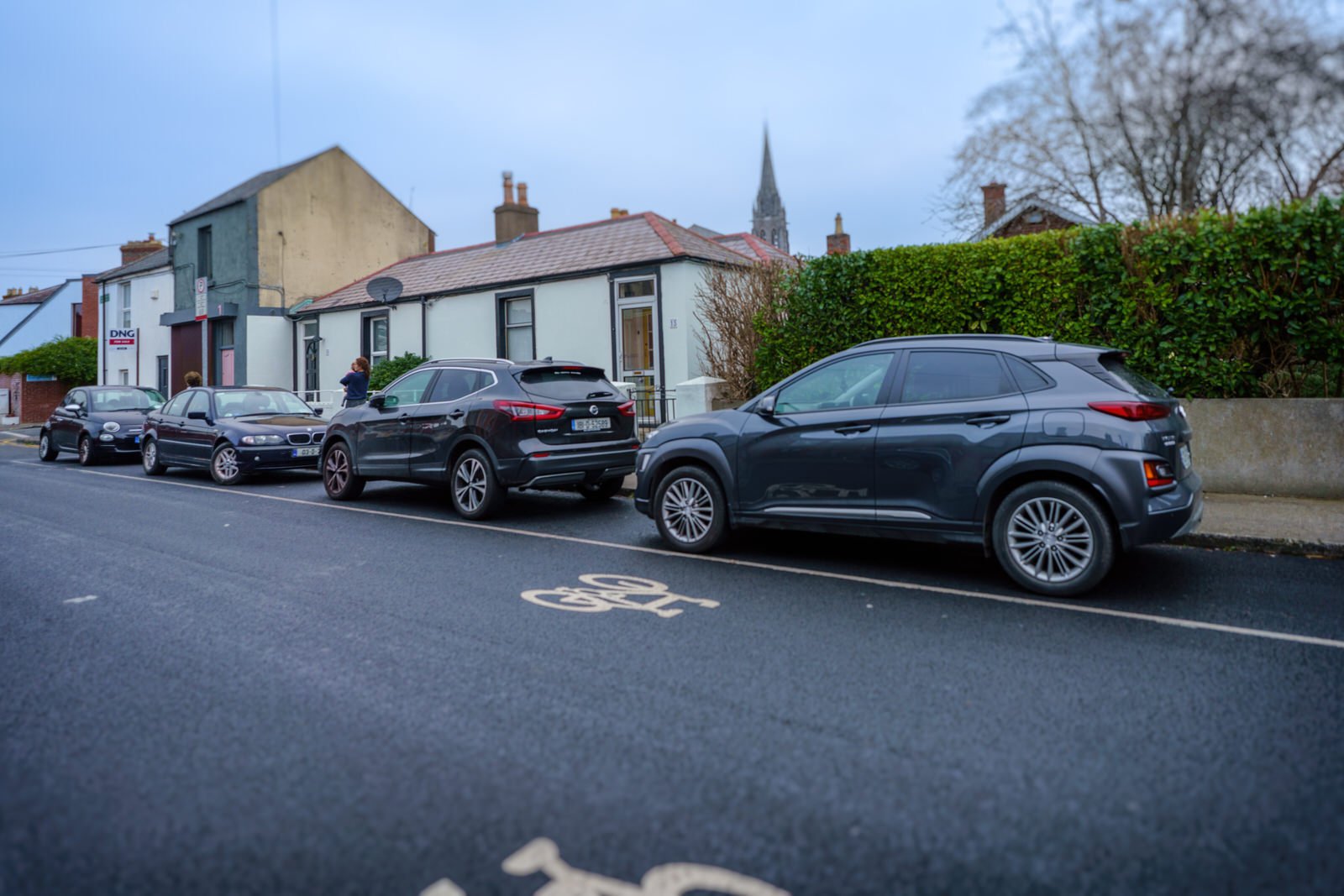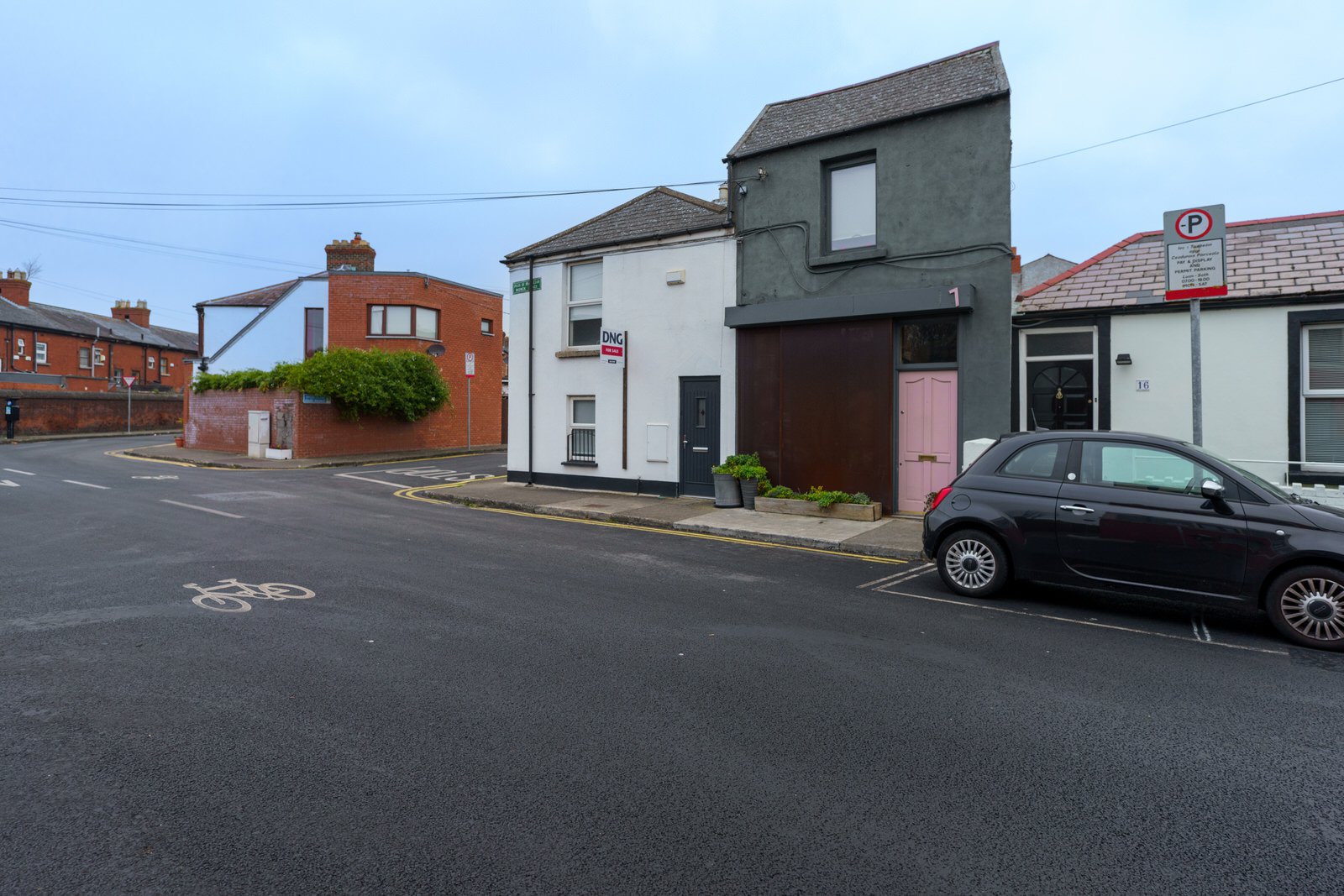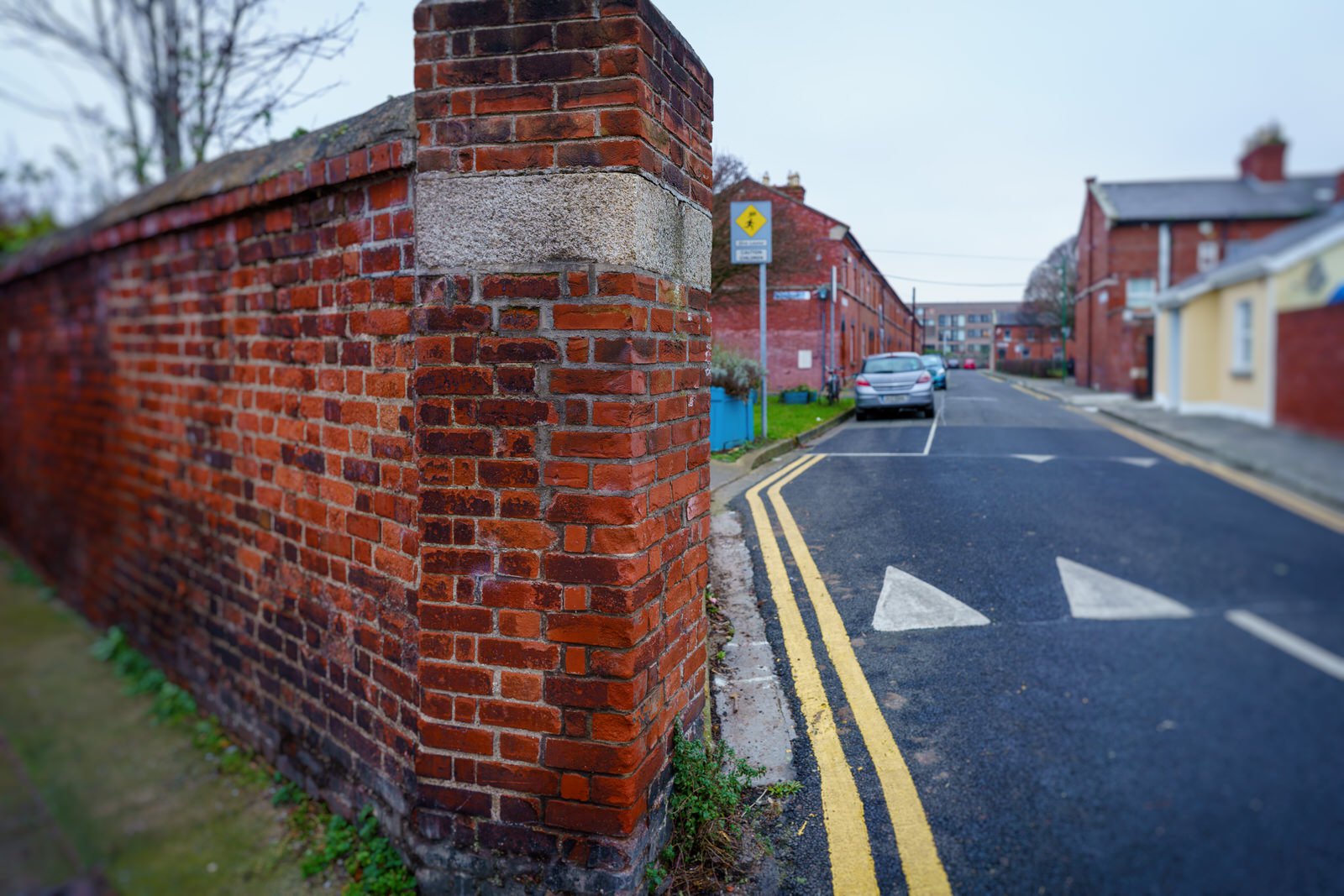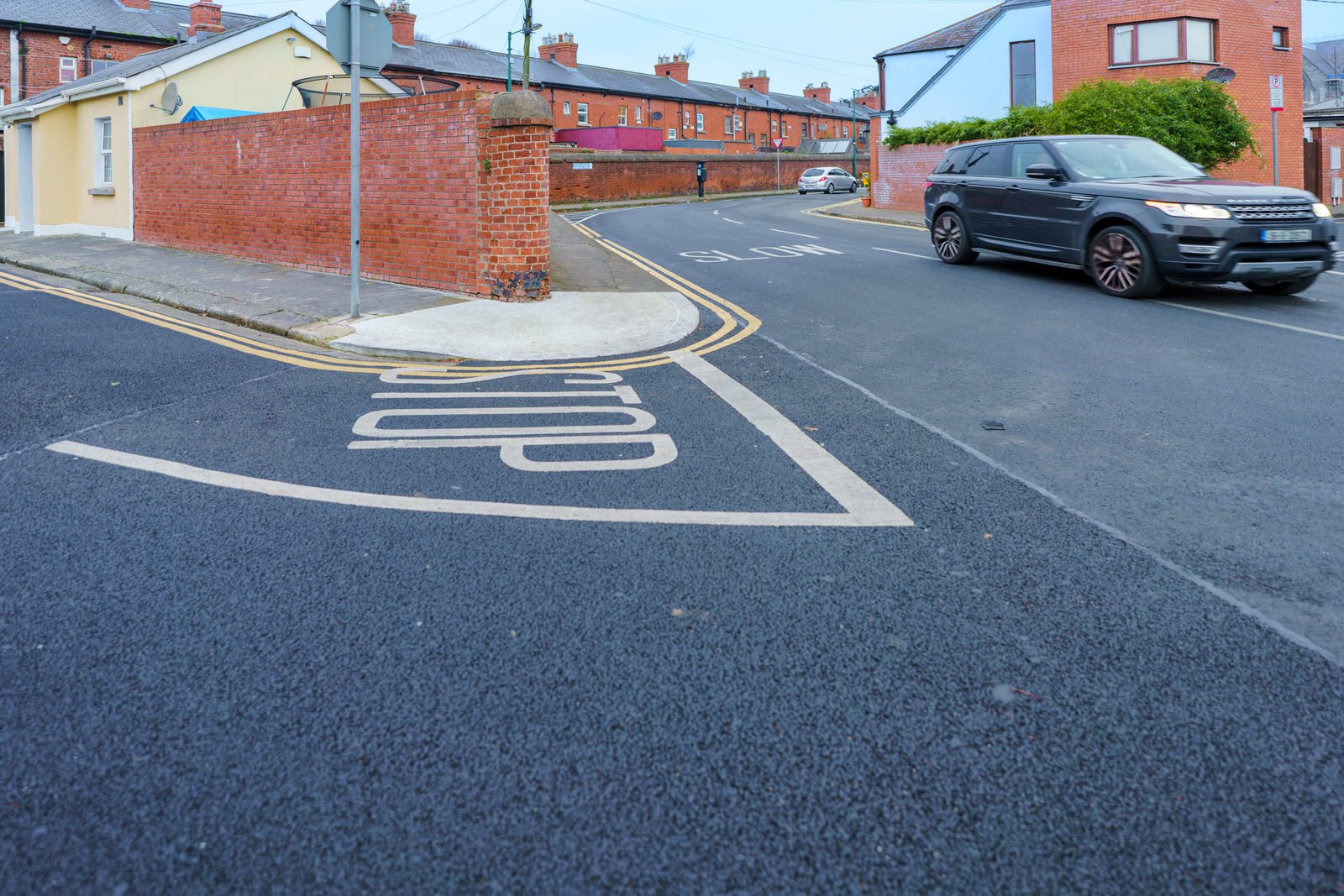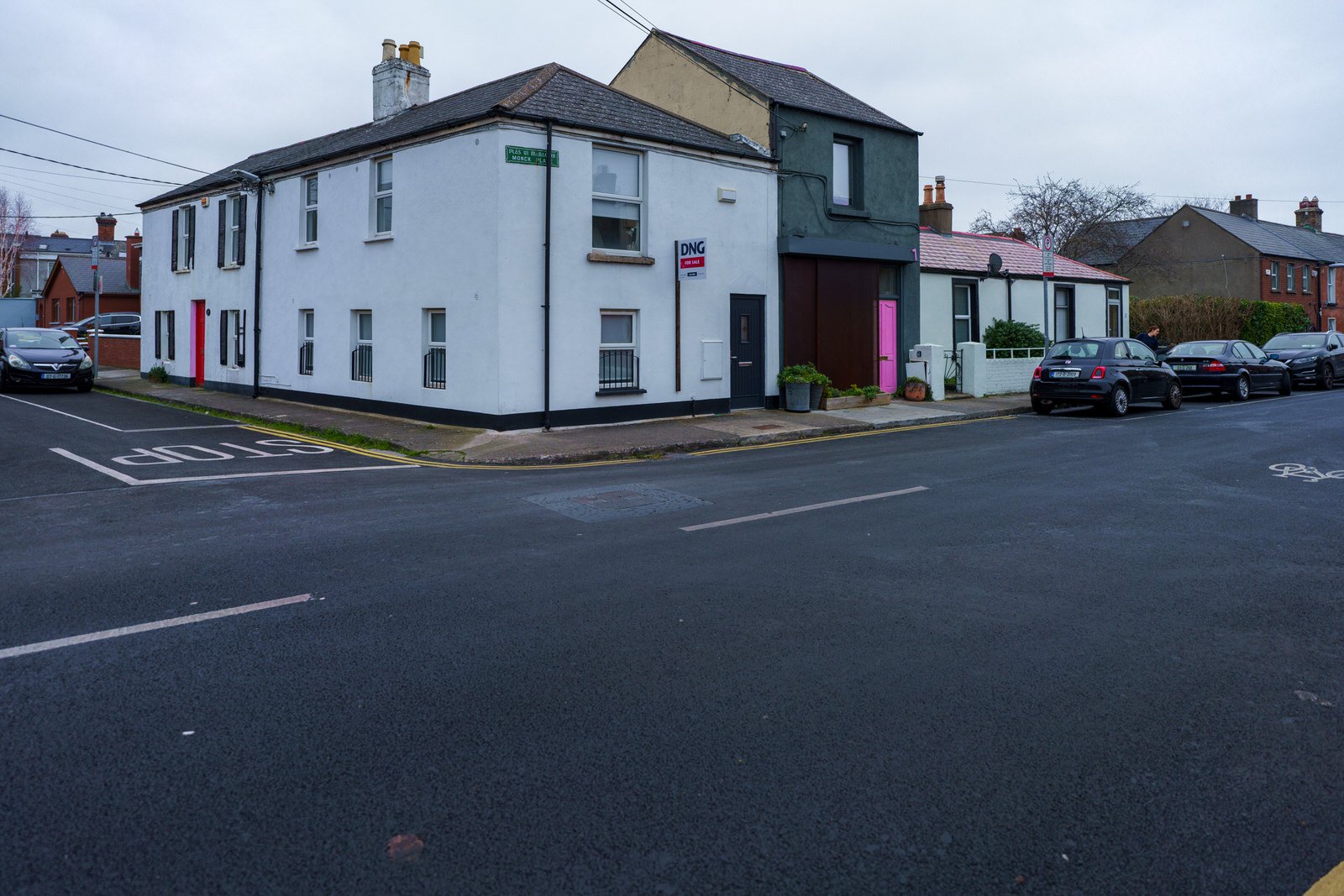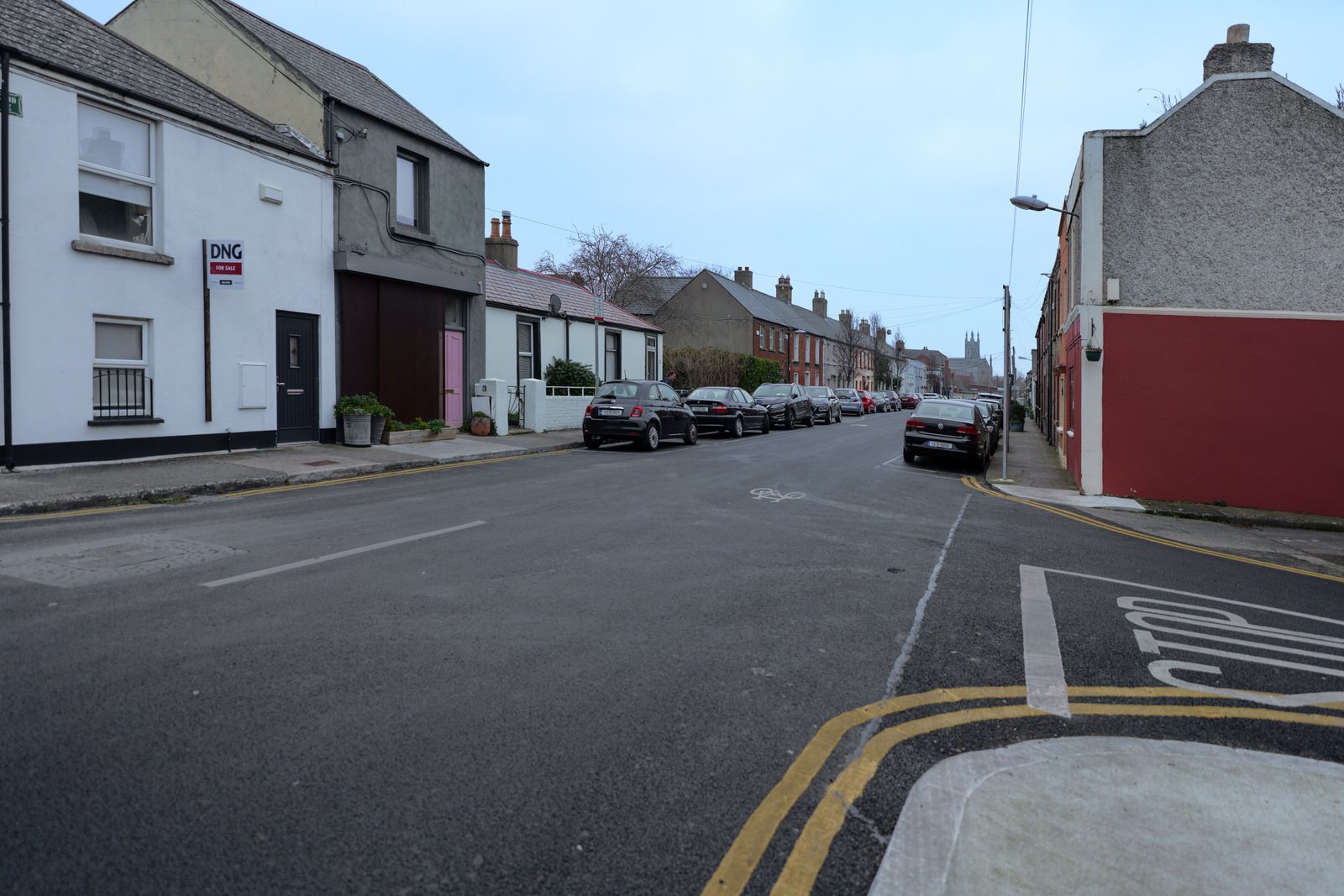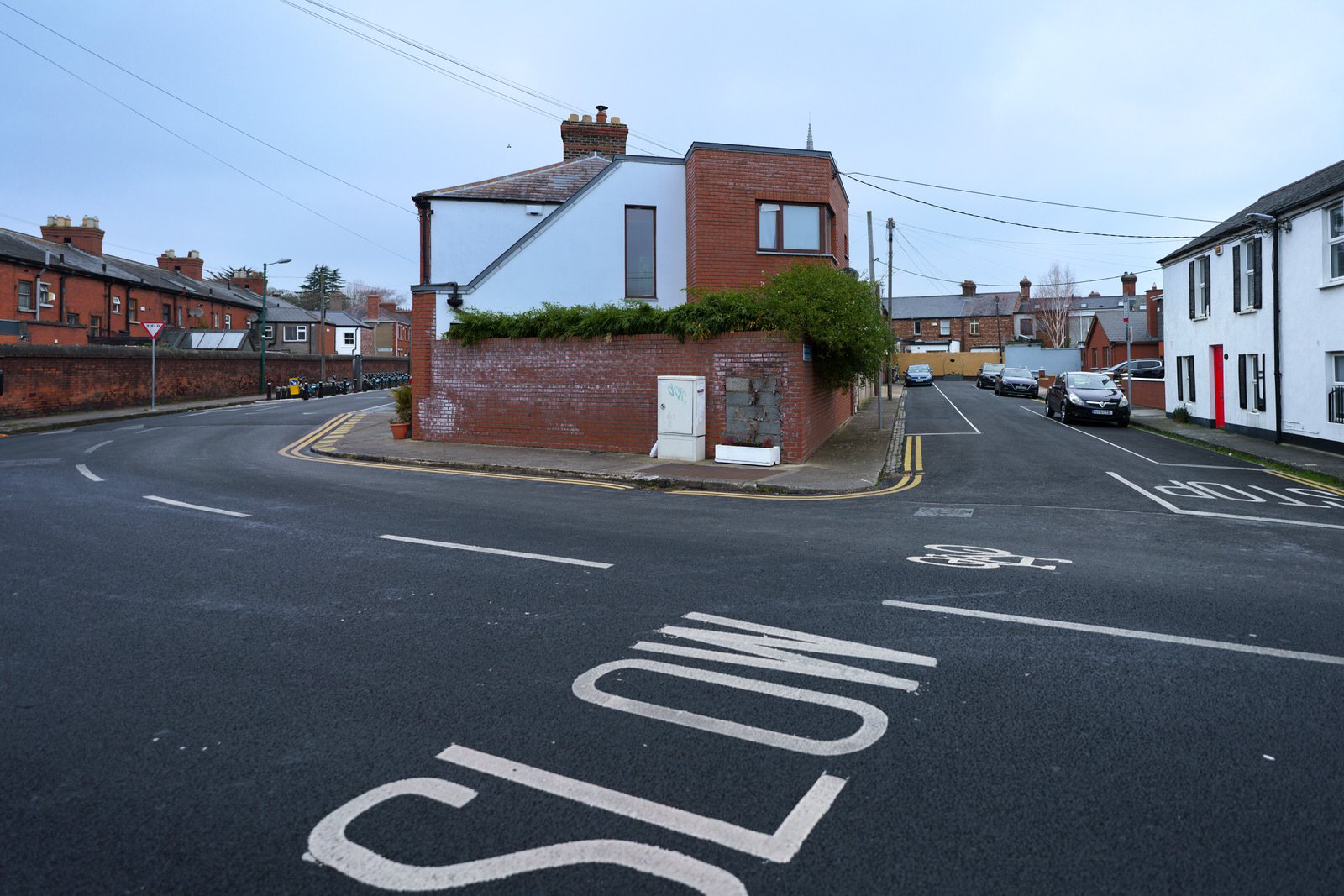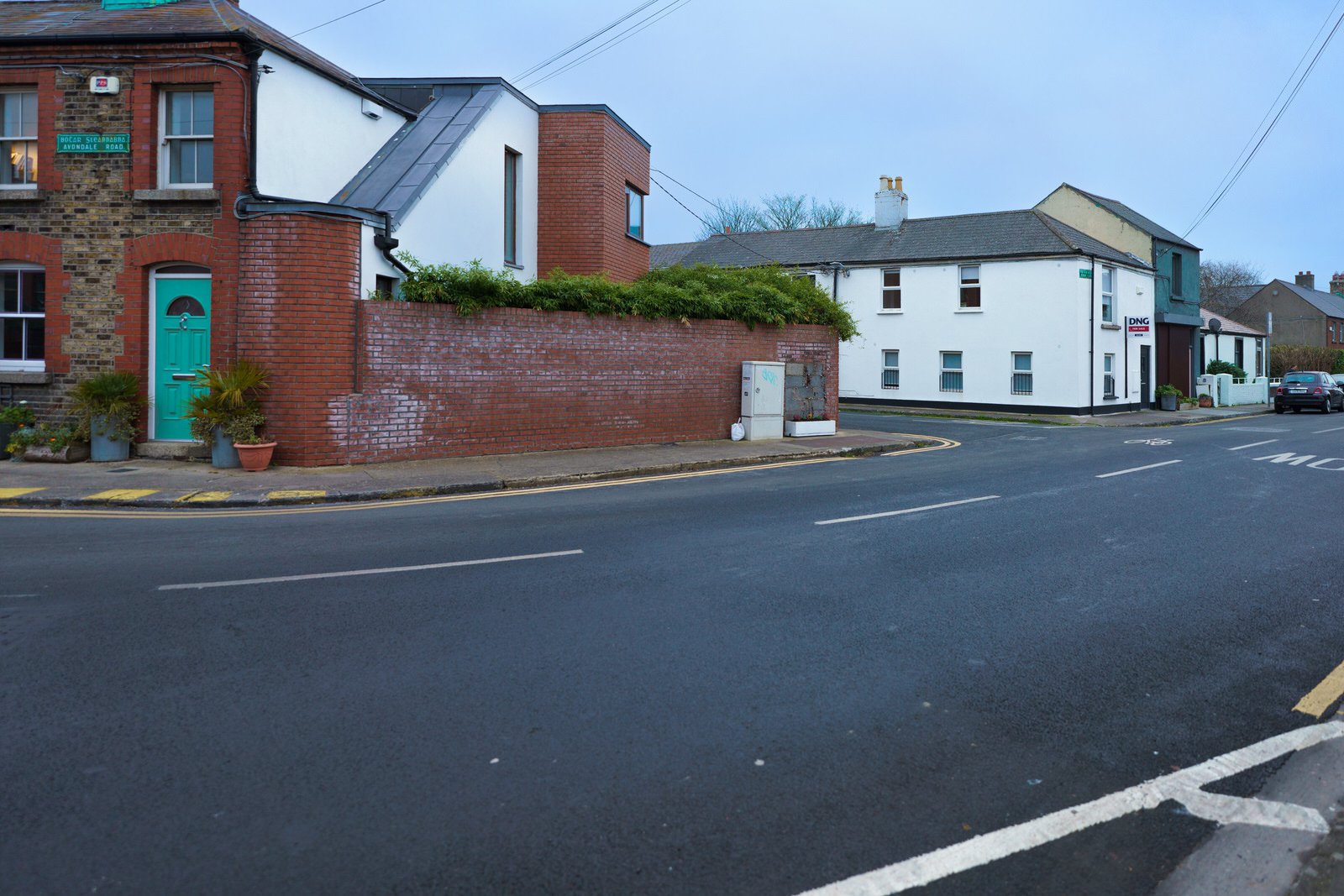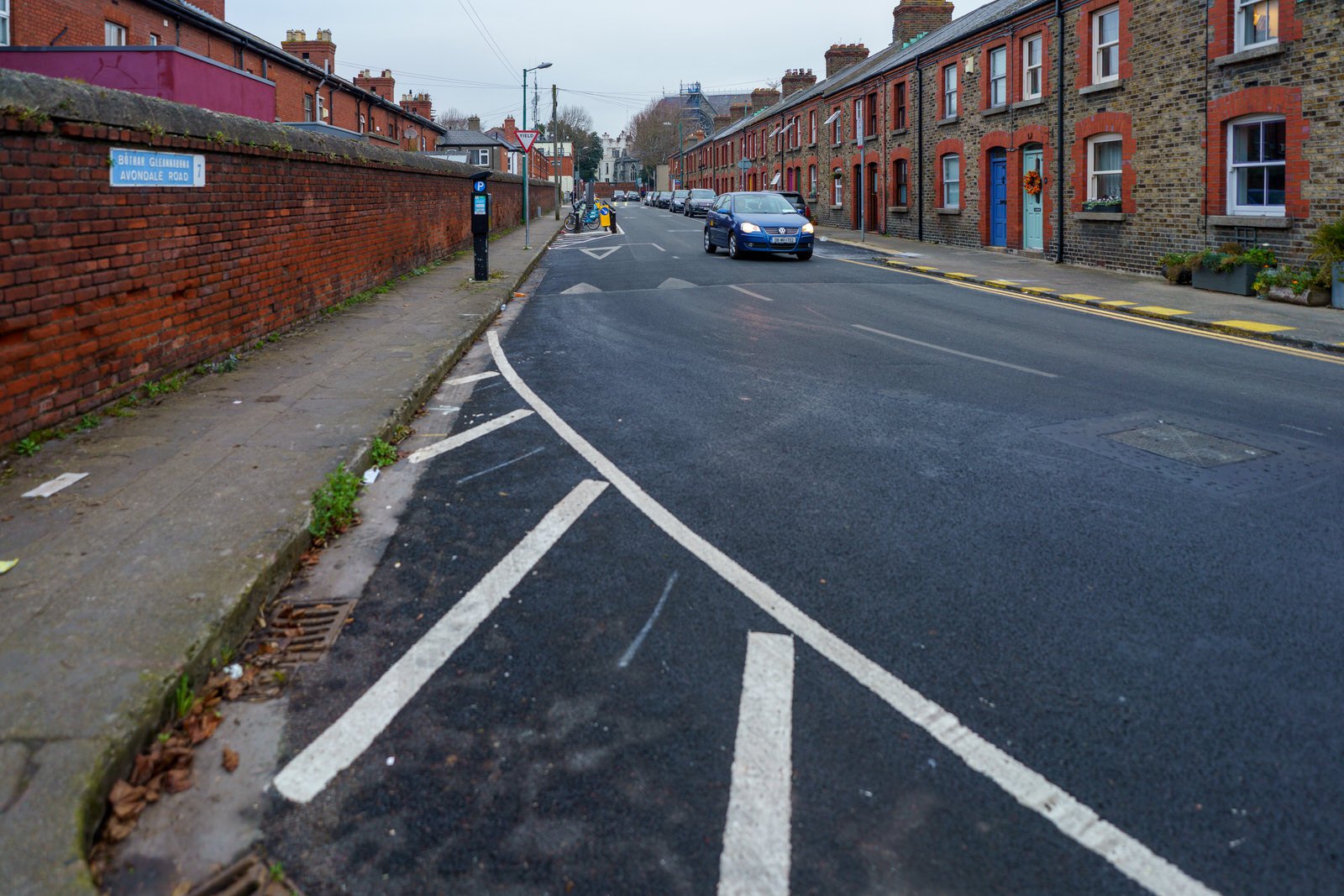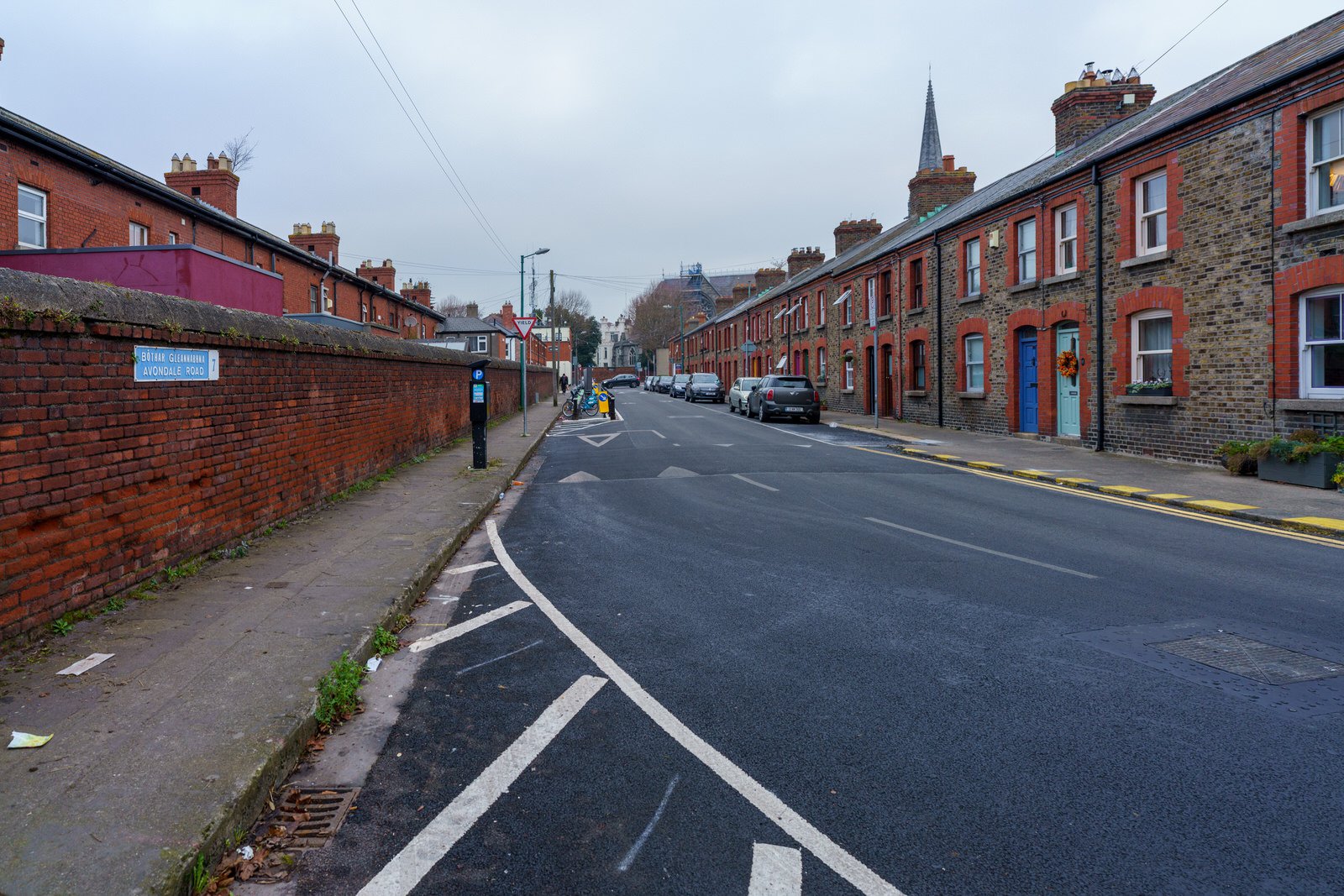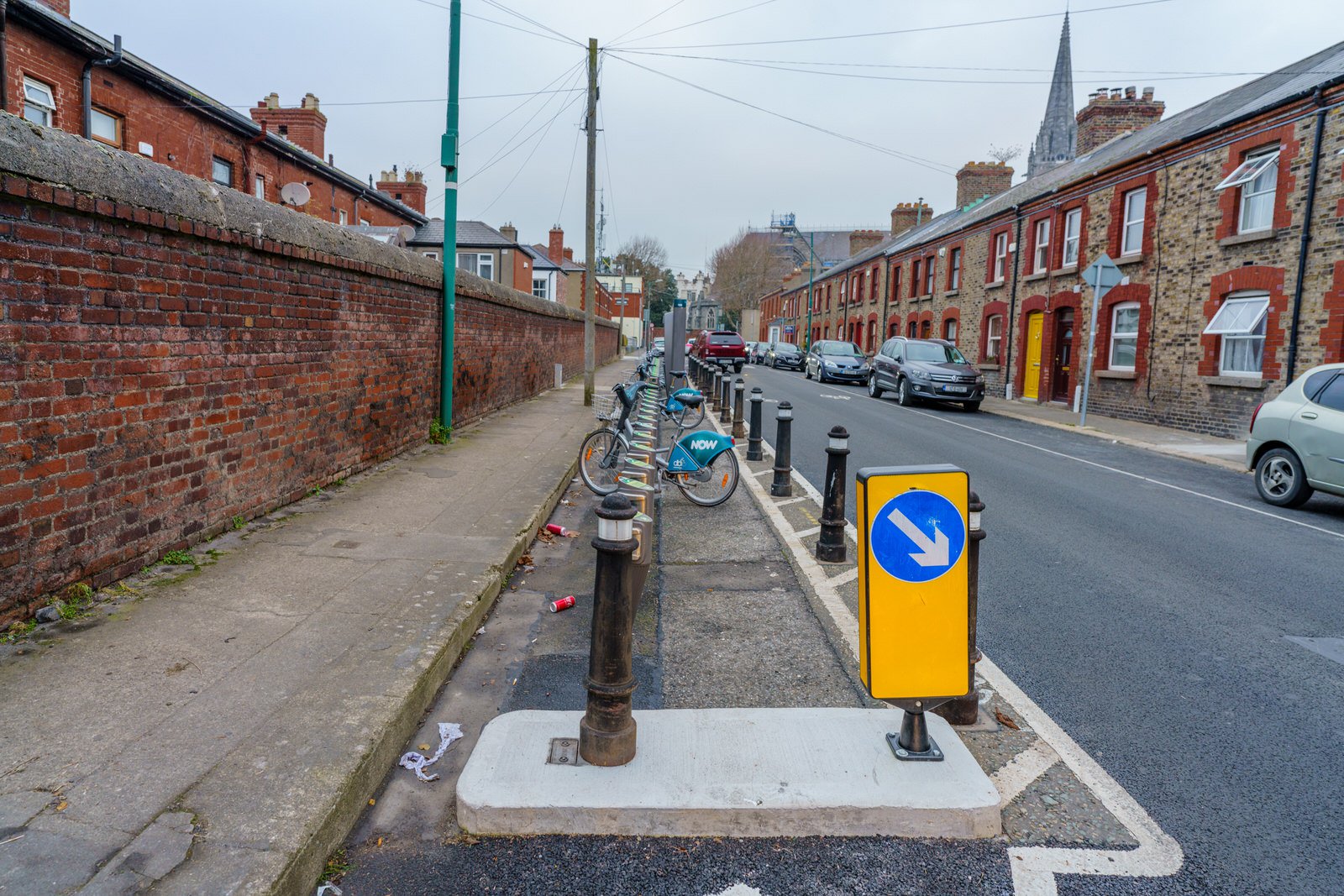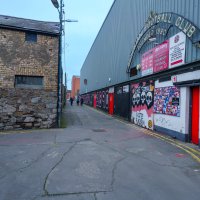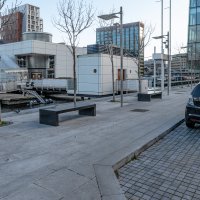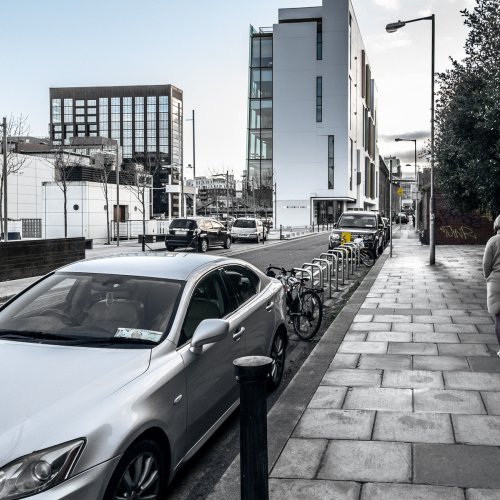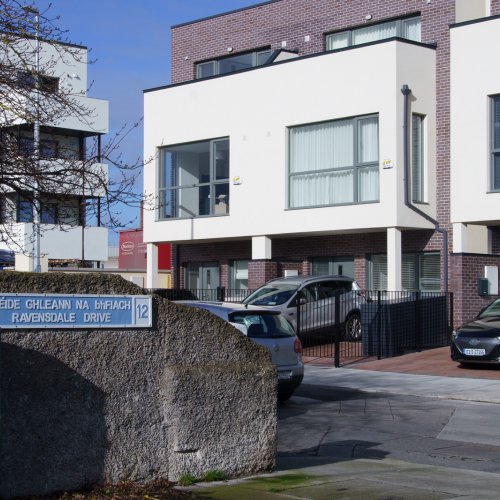The original Irish language name, Glas Mochonóg, means Monck's Green, which evolved to the variants Manogue and Minogue, and anglicised as Monck. This family held the local demesne at Grangegorman following inter-marriage with the Stanley family, becoming Stanley Monck. The Green served as play field and parade ground was bisected by the main north road which ran from the foot of the Old Bridge of Dublin. Lying low between the stepping stone crossing of the Bradogue river (which now flows underground) ia a common called the Glasminogue. Between the Broadstone and the village of Baile Phib at Monck Place, it often flooded and turned into a quagmire. This area was part of the Grangegorman estate.
The Broadstone area underwent significant urban development in the early nineteenth century in order to fulfill the commercial and residential needs of the Royal Canal Company headquarters and Harbour Terminus operation. The later onset of John S. Mulvaney's Midland Great Western Railway and the railway engineering works brought further development to North Circular Road intersection and east to Blessington Street. The natural expansion of the city saw the development move north with residential housing reaching Phibsborough, and Glasnevin, and the Phoenix Park to the northwest.
St. Peter's Catholic Church and schools date from 1862. The construction of the church was controversial, resulting in a long and costly lawsuit. This dispute between the architect and builder ended in the courts and required the intervention of the Roman Catholic Archbishop of Dublin. All Saints Church of Ireland Parish Church, Phibsborough Road, was completed in 1904. The renowned Tractarian, Dr Maturin, was rector for many years, establishing a High Church tradition of worship. The beautiful interior has been restored in recent years, having suffered fire damage in 1968.
